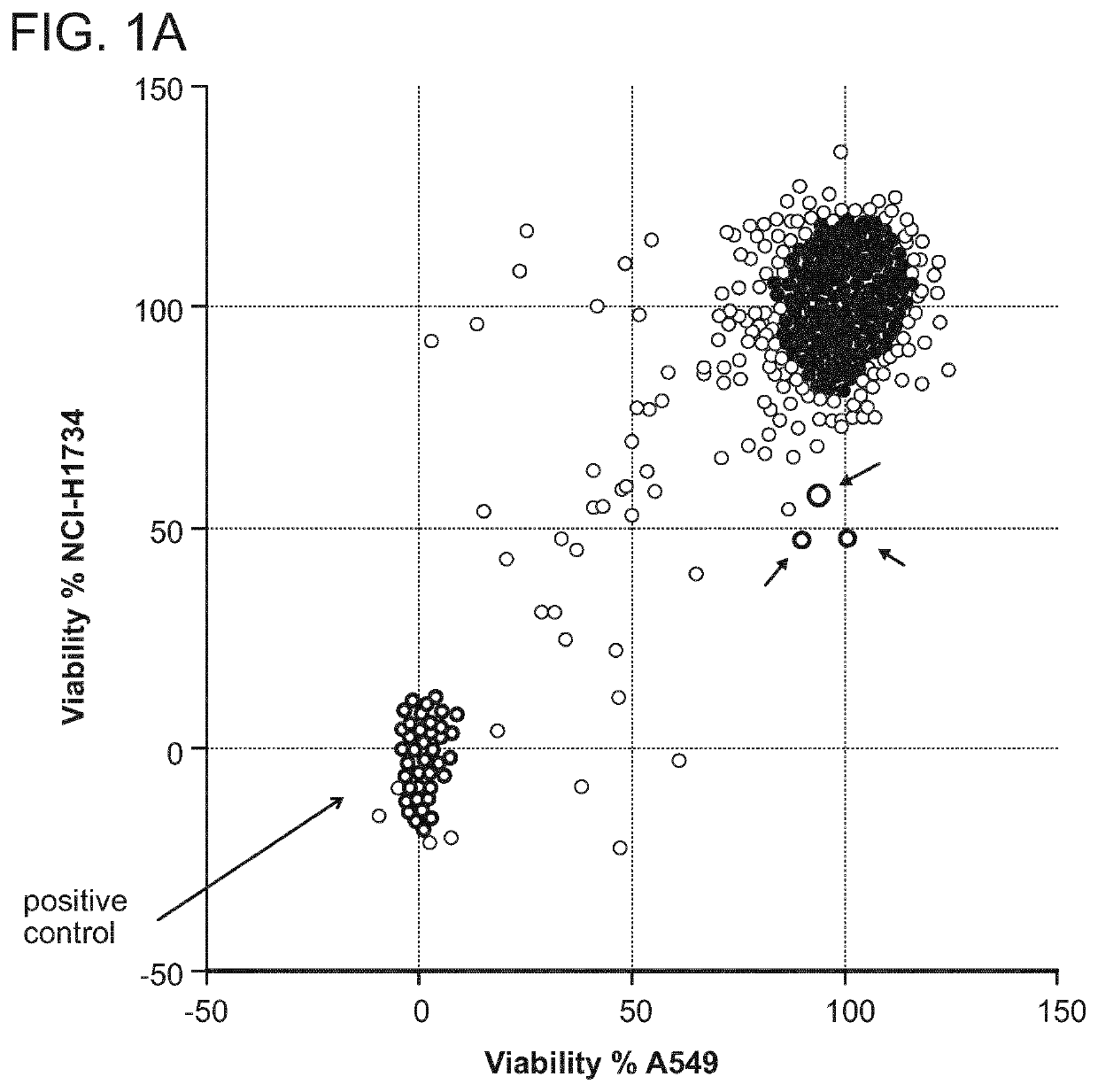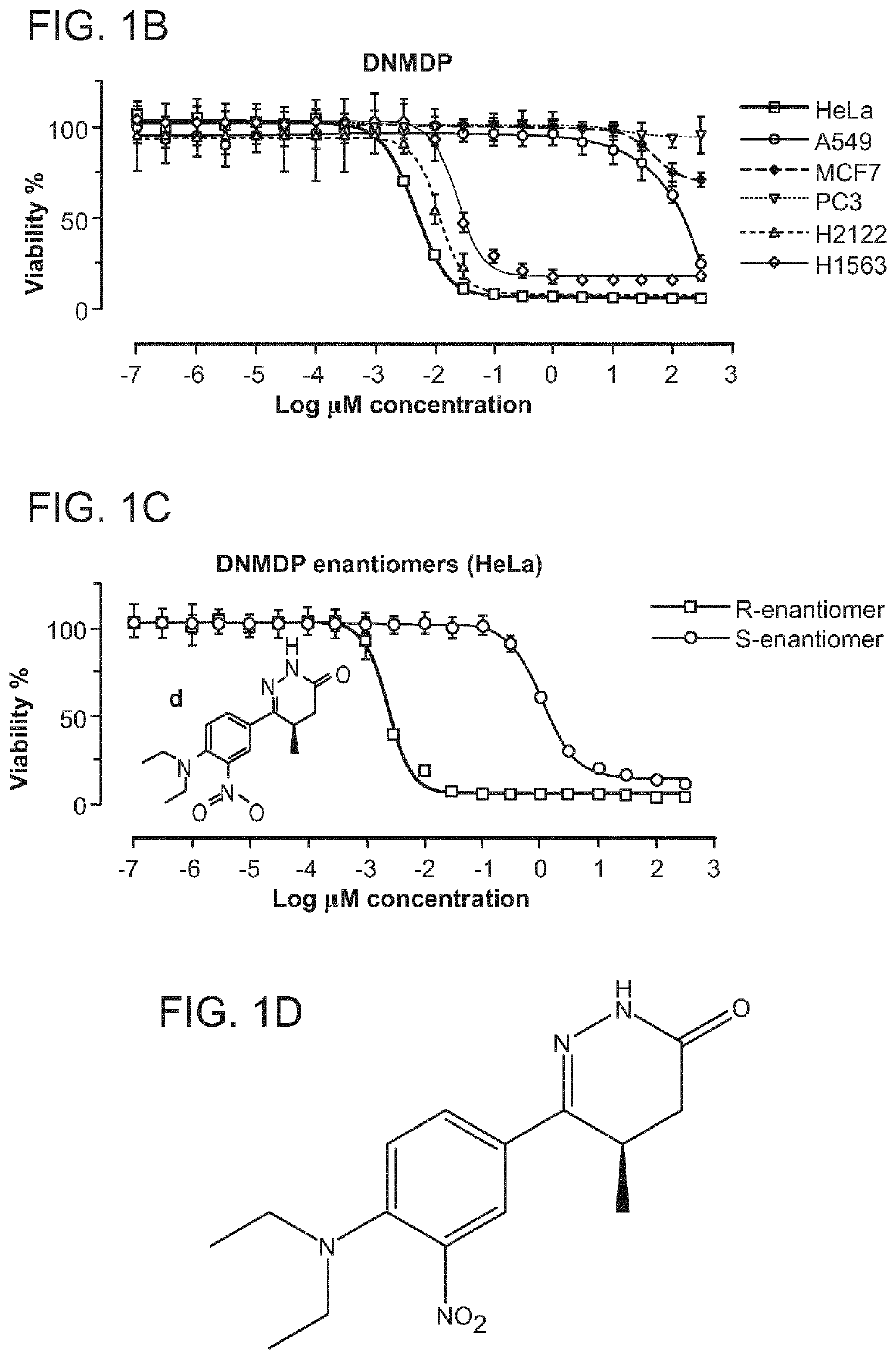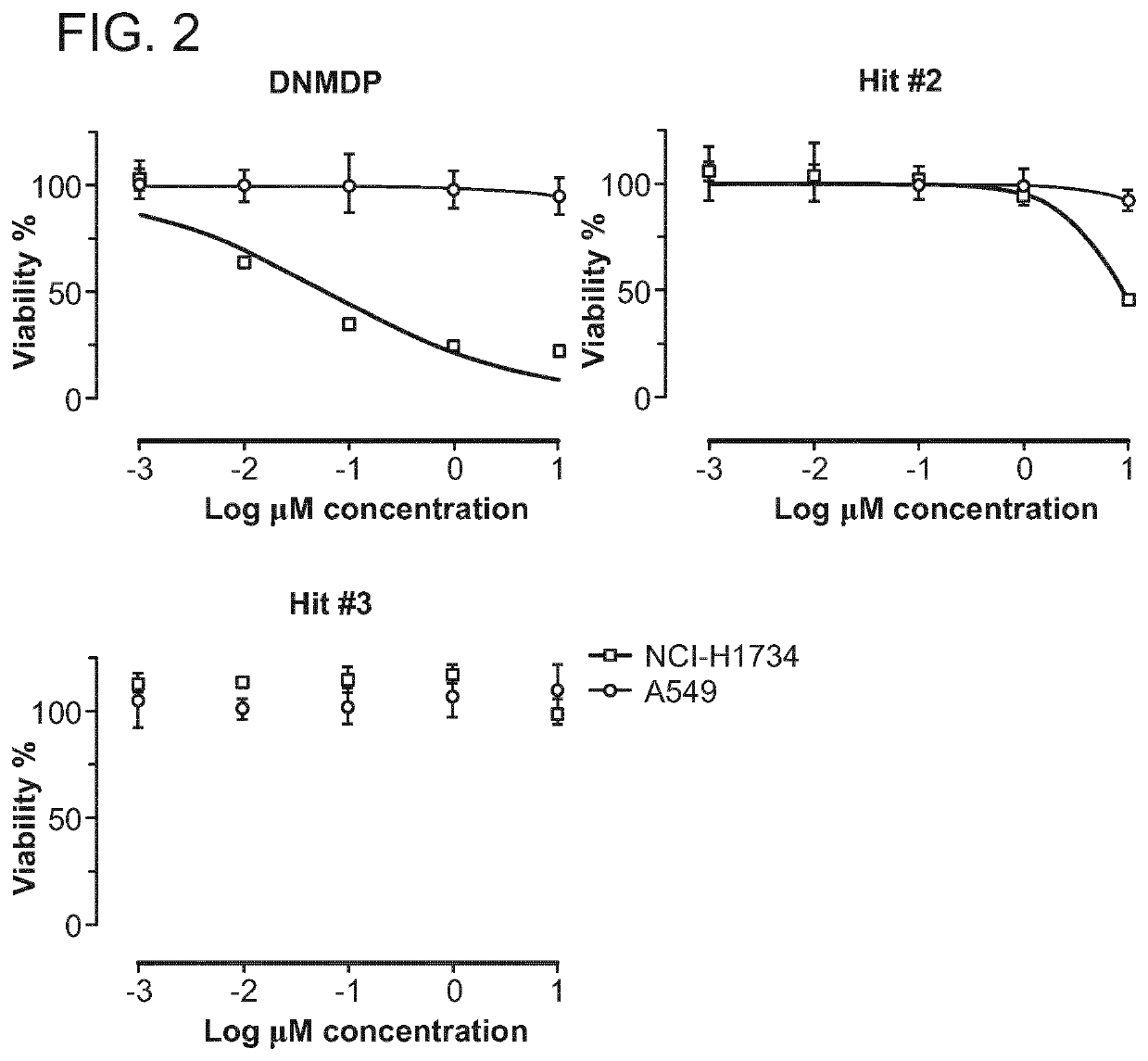Compounds, compositions and methods for cancer patient stratification and cancer treatment
a cancer patient and composition technology, applied in the field of compounds, compositions and methods for cancer patient stratification and cancer treatment, can solve the problems that many cancer patients are still left without effective therapeutic options, and achieve the effects of low complexity, high sensitivity, and high volume throughpu
- Summary
- Abstract
- Description
- Claims
- Application Information
AI Technical Summary
Benefits of technology
Problems solved by technology
Method used
Image
Examples
example 1
ation of a Cell-Selective Cytotoxic Small Molecule
[0274]To identify anti-cancer compounds with cell-selective cytotoxic activity, an unbiased chemical screen was performed in two lung adenocarcinoma cell lines, A549 and NCI-H1734, both of which harbor oncogenic KRAS mutations and truncating STK11 mutations, and which were TP53 wild type and mutant (R273L), respectively. 1,924 compounds were screened from the Molecular Libraries Small-Molecule Repository validation set in the A549 and NCI-H1734 cell lines at a single concentration of 10 μM in 384-well format in duplicate. As a proxy for cellular viability, ATP content was measured after 48 hours of compound treatment.
[0275]Three compounds showed a selective reduction in cell viability for the NCI-H1734 cell line compared to the A549 cell line, with an approximately 50% reduction in the NCI-H1734 cell line, which is >4 median absolute deviations from the median in the negative direction, compared to a minimal change of <1 median absol...
example 1b
Cell Proliferation Measurement
[0279]The antiproliferative activity of the compounds of the general formula (I) was examined in vitro in human cancer cells. For this purpose, 1000 cells were plated in 384-well plates with appropriate growth medium and incubated at 37° C. overnight. After 24 h, cells on one plate (0 h plate) were treated with 30 μl / cavity of CTG solution (Promega Cell Titer Glo (catalogue # G755B and G756B)) and incubated at room temperature for 10 min, and luminescence was measured by means of a VICTOR V (Perkin Elmer), in order to determine cell viability on commencement of treatment. The cells on the test plate were treated with the compounds of the general formula (I) as and incubated at 37° C. for 72 h. The compounds were added to the cells by means of an HP D300 digital dispenser in a 10-step 2.5-fold dilution series. As control, the cells were treated with vehicle (DMSO at 0.3% final concentration). After 72 h, the cells were treated with 30 μl / cavity of CTG so...
example 2
on of Predictive Chemogenomics and Identification of PDE3A as a Putative Target of DNMDP
[0282]Given the potent cell-selective growth inhibition by 6-(4-(diethylamino)-3-nitrophenyl)-5-methyl-4,5-dihydropyridazin-3(2H)-one (DNMDP), its mechanism of action was examined in more detail. To determine the molecular target of DNMDP, chemogenomic analysis was performed of the 766 tested cell lines, previously characterized for mutations, copy number, and gene expression features as part of the Cancer Cell Line Encyclopedia (CCLE, Barretina et al., 2012), to look for correlation between these genomic features and DNMDP sensitivity. Analysis of Pearson correlations between DNMDP sensitivity and expression of individual genes across the cell line set showed a strong correlation with expression of the PDE3A gene, encoding phosphodiesterase 3A (FIG. 5A). The correlation between DNMDP sensitivity and PDE3A expression is not perfect (FIG. 18), and it is possible that some errors are introduced due...
PUM
| Property | Measurement | Unit |
|---|---|---|
| Temperature | aaaaa | aaaaa |
| Angle | aaaaa | aaaaa |
| Angle | aaaaa | aaaaa |
Abstract
Description
Claims
Application Information
 Login to View More
Login to View More - R&D
- Intellectual Property
- Life Sciences
- Materials
- Tech Scout
- Unparalleled Data Quality
- Higher Quality Content
- 60% Fewer Hallucinations
Browse by: Latest US Patents, China's latest patents, Technical Efficacy Thesaurus, Application Domain, Technology Topic, Popular Technical Reports.
© 2025 PatSnap. All rights reserved.Legal|Privacy policy|Modern Slavery Act Transparency Statement|Sitemap|About US| Contact US: help@patsnap.com



